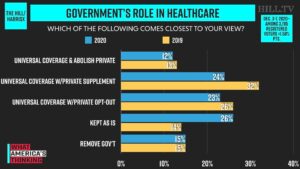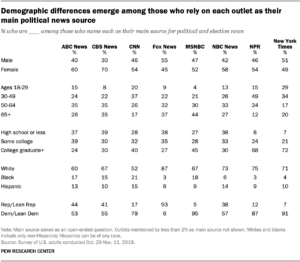In his article, “Trump’s Coup Attempt Could Cost Republicans the Senate: Georgians want him to concede the November election: Instead, he’s planning a fight in Congress just as they go to the polls” at slate.com, William Saletan notes that a Survey USA poll conducted Wednesday to Sunday found: “By margins of 29 and 51 points, respectively, suburbanites and moderates said Biden won the election “fair and square.” By margins of 28, 33, and 43 points, suburbanites, independents, and moderates said that when Congress meets on Jan. 6 to certify the votes of the Electoral College, Trump should “allow the count to proceed” rather than “ask Republican members of Congress to object.” Many of these voters will be making up their minds about the runoffs just a day or two before the congressional showdown. Anxiety over the fight and the outcome will be at a peak….Democrats have yet to exploit Trump’s defiance. They hope that some hardcore Trump voters, angry at the GOP for failing to defend his post-election challenges, will refuse to turn out for Loeffler and Perdue. But there’s also an opportunity in the middle. Most Georgians, including more than a quarter of those who voted for Loeffler or Perdue in November, oppose the congressional fight Trump and his allies are preparing. These are law-and-order voters. They don’t want a crisis or a coup. If the GOP loses even a fraction of them, it will lose the Senate.”
Is there a chance that Trump’s closing theatrics – his outrageous pardons, upending the stimulus agreement, talk of martial law, veto of the defense bill, more Covid denials in response to the spike in deaths from new infections – will help Democratic senate candidates Ossoff and Warnock win in Georgia? By calling attention to divisions in the Republican party, and reminding Georgia voters who would normally skip the runoff election that the G.O.P. is now the party of utter chaos, Democrats can hope that more suburban moderates will conclude that divided government doesn’t make much sense when one party, the G.O.P., is a mess, while Loeffler and Perdue are engulfed in embarrassing questions about their self-dealing. Less than two weeks remain in the Georgia runoff campaigns, so there is probably not enough time for new ads portraying the Republicans as the party of chaos. But Dems can hope that the media, mainstream and social, and Georgia’s impressive progressive activists will step up and press the case. Whatever happens, Democrats can be proud that their candidates have gotten this close, which was unthinkable a year ago.
Washington Post syndicated columnist E. J. Dionne. Jr. shares his thougths on “How Biden can make us hate each other a little bit less” and govern more effectively: “At least some of the voters who stuck with Trump did so because they liked his attacks on globalization, were more worried about the economy than the pandemic and felt ignored by conventional politicians. Biden needs to push the parts of his program (its “buy American” components, for example) that speak directly to these frustrations….The fights he chooses to pick with Republicans should be on behalf of proposals (a higher minimum wage, affordable health insurance, more family-friendly workplaces, political reform to reduce big money’s role in politics) that make clear who is on the side of the forgotten…..This also means that Biden’s laudable emphasis on fighting climate change must constantly come back to the job-creating potential of investments in green technologies — which is what Biden did when he announced his climate team on Saturday. The surest way to block progress is to allow opponents of climate action to cast it as a war by “elitist” environmentalists on workers employed in existing energy sectors.”
Harold Meyerson looks toward the future at The American Prospect, and offers some advice for Democrats: “Despite Biden’s success in reassembling the “blue wall” this November, Republicans’ long-term prospects in the Midwest look pretty good. As the nation as a whole grows more multiracial and college-educated, as millennials and Gen Zers move the electorate leftward, Midwestern states will largely resist these trends. Their young people will move away to more dynamic economies (for which reason immigrants will go elsewhere, too), and their cities will continue to shrink….Democrats will have to meet this challenge not only by doing their damnedest to hold these states, but by trying to hasten the Sun Belt dynamics that enabled them to squeak to victory this year in Arizona and Georgia. Texas disappointed the Democrats this year, but even with the setback in the Rio Grande Valley, Biden still did better there than he did in Ohio and Iowa. Democrats are going to have to make long-term investments in North Carolina, Florida, and, yes, Texas if they’re going to become the majority party electorally. If the popular vote were determinative for president, of course, such concerns would be a good deal less acute, so organizing around the National Popular Vote Interstate Compact would also be a worthwhile Democratic mission.”





